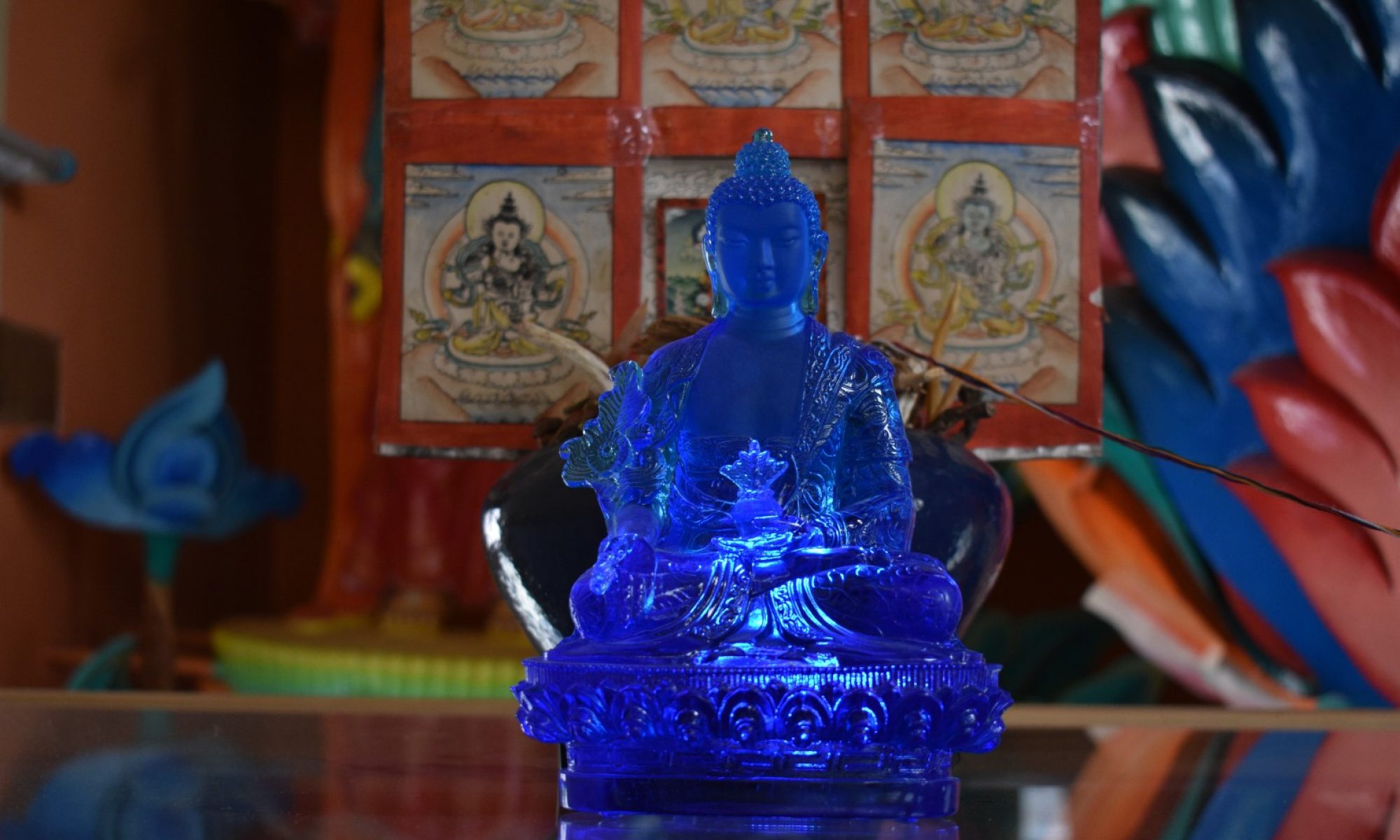By Jan van der Valk
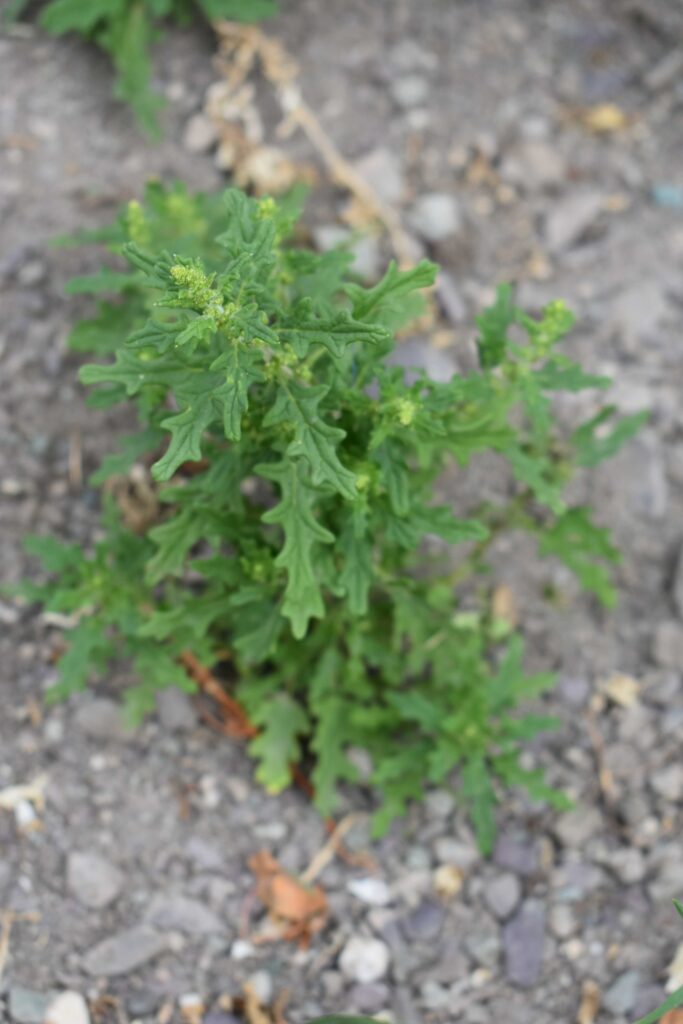
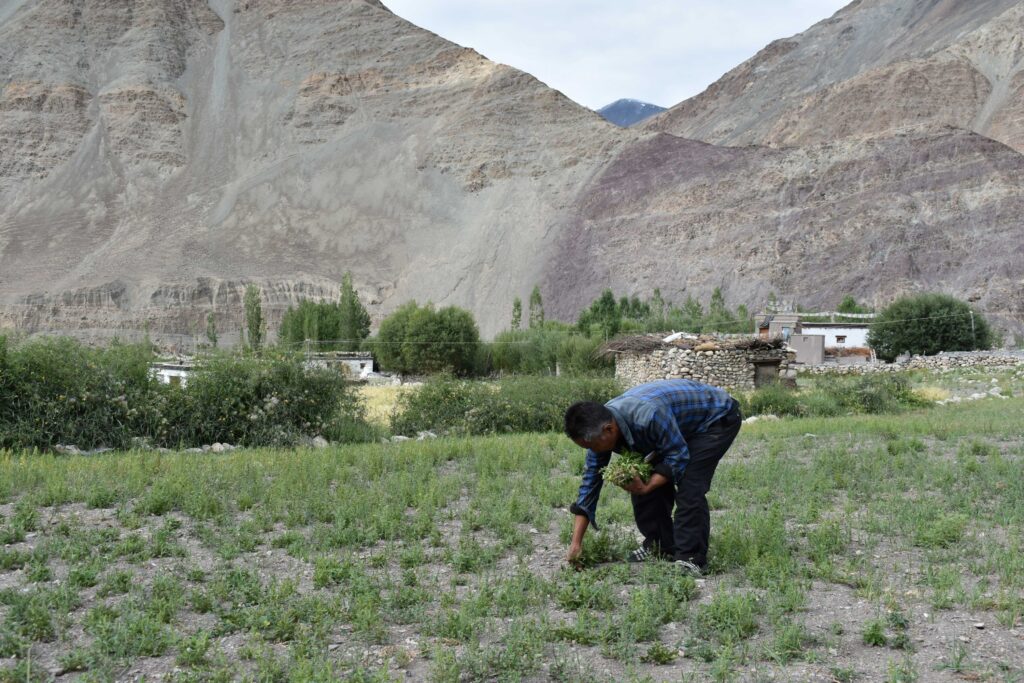
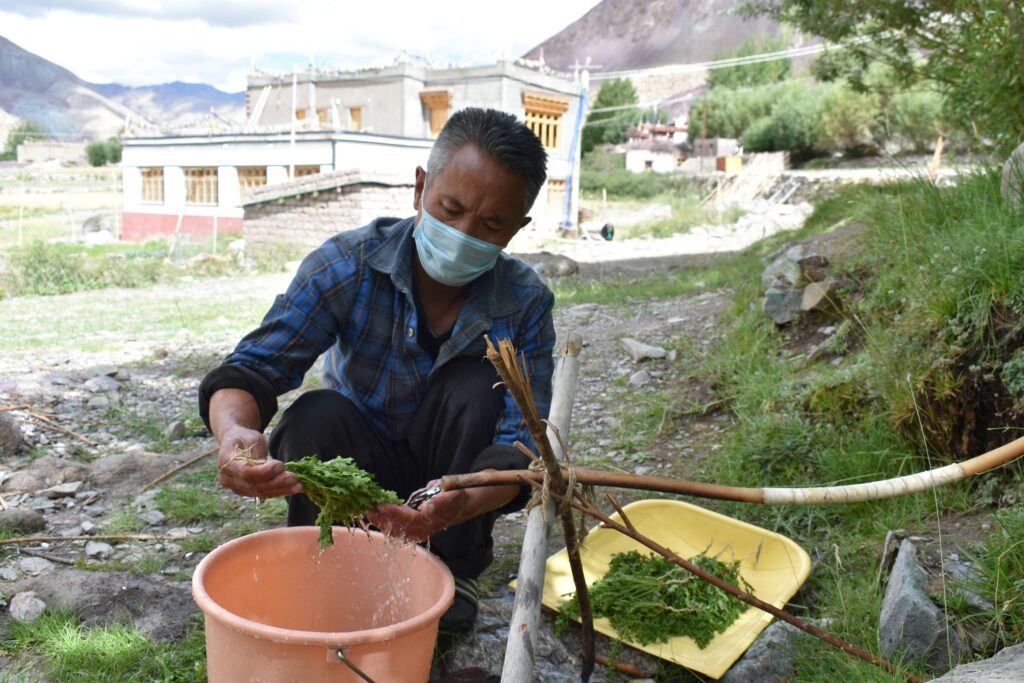
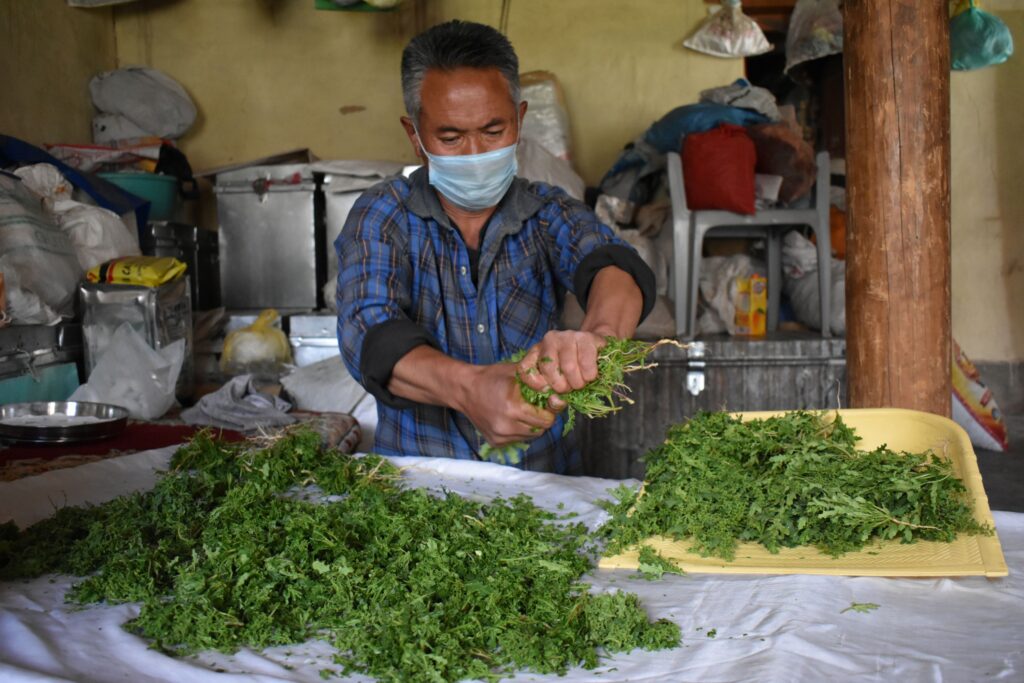
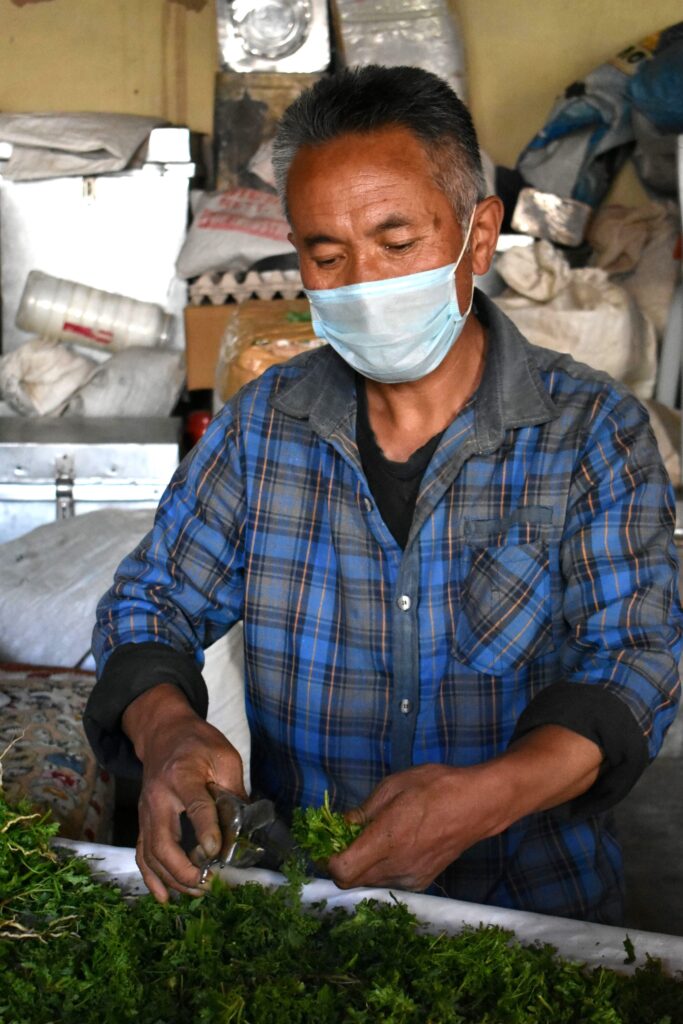
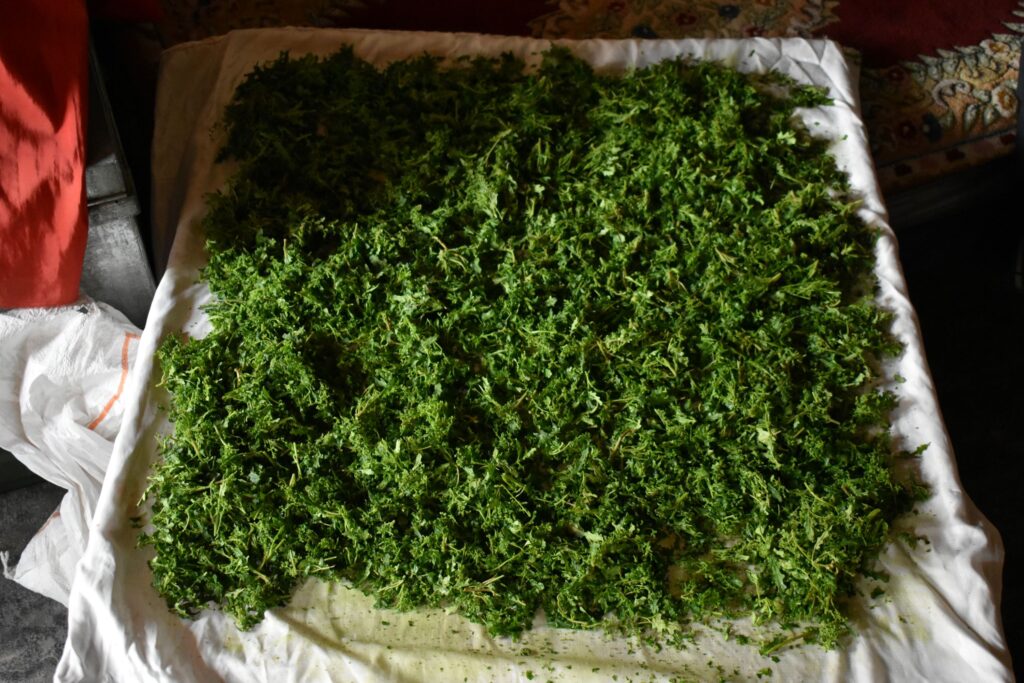
On the morning of August 10, 2022, Amchi Nawang Tsering and I were looking at plants on our way to the old village temple when he spontaneously decided to collect some zangnyid (zangs nyid, identified as Dysphania nepalensis). It was growing all over the fallow field we were crossing, and he noted that some of the plants were already over their ideal harvesting time since they were forming immature seeds. Amchi Nawang shared that this herb was also known by locals as a remedy against bile complaints, and that he only uses it in one effective powder formula simply called trimen: “bile medicine.” He instructed me to look for fresh, verdant specimens, neither overgrown, nor small.
Before we actually began to harvest, Amchi Nawang swiftly recited Mipham Rinpoche’s Phakpa Tashi Gyépa prayer for auspicious beginnings. He then plucked and threw some tips of the plants up in the air while paying homage to Medicine Buddha and repeating his mantra. While collecting, Amchi-la continued to recite this as well as the Tendrel Nyingpo mantra that summarizes the Buddha’s teachings. As we picked zangnyid, it emitted a quite strong fragrance akin to coriander leaves.
A river irrigation channel nearby offered us the crystal clear but freezing cold water for removing any dirt from our harvest. The water was so cold that it hurt to have our hands submerged for more than a minute. We carefully washed each little bundle of green twice, taking off inferior yellowish parts. Back in Amchi-la’s pharmacy room, we then first broke the plant material into smaller fragments with a wringing movement, and then cut off any hard portions such as roots. Spread equally on a white cloth over a low rack, the zangnyid was ready for drying, which happens very quickly in this high-altitude cold desert area. The drying process took place indoors in a shaded area, corresponding to the cooling nature of the herb.
As I recall and reflect on this wonderful experience and my visits to Nyi (about a four-hour drive south along the Indus from Leh) over the past few years, it strikes me how much labor and care rural physicians such as Nawang Tsering invest in the making of medicine, and how much of this process is not written down in Tibetan medical texts. Zangnyid is not even mentioned as such in Sowa Rigpa pharmacopeias. Perhaps it is a local variant of zangtsi (zangs rtsi), which is also indicated for bile disorders. But its smell is entirely different! In the project monograph we are preparing titled Crafting Potency, we approach traditional pharmacy processes such as those introduced above through the lens of artisanship because we believe there is much to learn from how Himalayan practitioners of Sowa Rigpa engage with ingredients through their senses, and how skilled practices including ritual transform potent substances into efficacious medicines.
